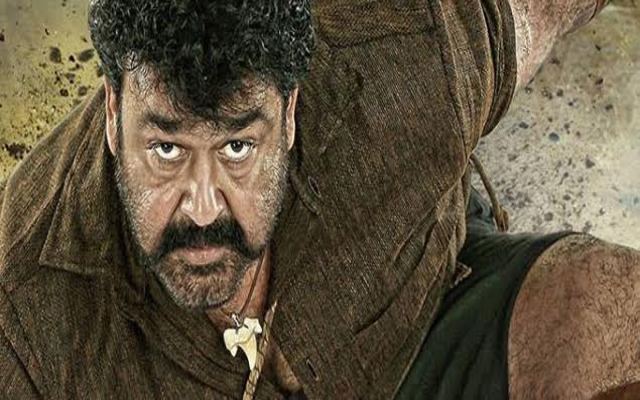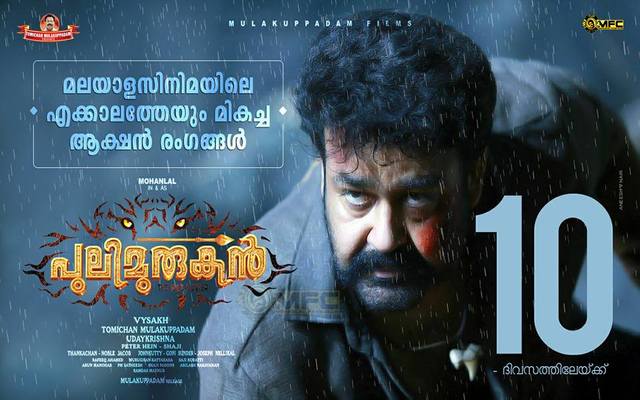17/10/2016
A good consumer is a strong fanatic. Despite his/her willingness to test and taste new products in the market, internally he/she remains loyal to the products that one had grown up with. While new products create a snobbish satisfaction for consumers, good old products confirm their belief systems and indirectly impart a sense of security. Conventions are such things that attract a collectively fickle society that’s in constant search for religious, political as well as aesthetic anchors, to their deep and dark innards.
This introduction is intended to set in perspective the success of the recent releases of both Mohanlal and Mammootty, the super and mega stars of Malayalam cinema. What makes these films click despite their cliched themes and narration? The magic behind the pull that gives these films returns similar to Bollywood hits should be something beyond the sophisticated film making techniques and the never- say- die star power and charisma.
Mohanlal’s `Pulimurugan,’ going by initial collection reports and projected estimates, is touted to become the first Malayalam film to enter the one-billion-rupee club. `Pulimurugan’ is about man-animal conflict that slowly turns into man to man conflict as the film progresses. The narrative doesn’t take a path of politics and the finer nuances of a tender ecological system at the verge of collapse. However, it does create an `other’ within the forest where man shouldn’t really have any business. Mohanlal’s character Pulimurugan is a wronged man as the beast kills his father, rendering him and his brother orphans. Interestingly, this story line endorses the colonial narrative of the modern man who pushes the natural inhabitants of the forests further inside, and when they retaliate, make or call them terrorists. However, the psychological identification of the audience with the hero automatically forgets or deliberately erases this subtext to confirm their belief in the convention. Pulimurugan doesn’t do what Life of Pi had done in 2012 either. In Life of Pi, the man-animal conflict was raised into a philosophical level, almost making Richard Parker, the tiger, a surrogate of the chef who perhaps raped and killed Pi Patel’s mother and other survivors in the capsized ship. Patel is destined to face the tiger for 227 days in the middle of an ocean.
The unprecedented enthusiasm among fans for Pulimurugan shows a different direction the Malayalee psyche has taken of late. The aarathi , garlanding, palabhishekam etc done on huge cut outs of Mohanlal during the release of the movie remind us of the ‘crazy’ fans of Rajnikant in Tamil Nadu and elsewhere. Fan club members and Malayalees in general have attributed the status of big brothers to both Mohan Lal and Mammootty (Lalettan and Mammukka). They are the eternal big brothers who stand in watch for the society and protect it from external attacks while playing out all its ‘male’ fantasies, underlining the need for maintaining a patriarchal order.
When a society largely moves toward heroic binaries that equally represent age, caste, religion, region, politics and culture, there happens an automatic effeminization of the same society with its members accepting their weakness and feminine nature, completely investing the agency of their protection in the hands of the heroes (if not in the real life, in the fantasies played out by them on the screen.) This is a double-edged situation where the females in these film narratives are further marginalized through objectification. In the meanwhile, the male society, as participants in the films’ spectacles, positions itself in the gaps left by the evacuation of the females from the films’ central narratives. By thus assuming the feminine nature (allegedly submissive under patriarchal rules), the male audience seeks fulfillment in the male bodies of these actors that reiterate the conventional qualifications of an ideal male within the Kerala context. Vengayil Kunhiraman Nayanar (1861-1914), one of the early exponents of Malayalam journalism, had written about the ideal qualities of a ‘complete man’: Kumba, kashandi, purathu romam, vedikkala, arayil pissankathi- Pot belly, bald head, body hair, bullet scar, knife in the waist. One could just juxtapose these qualities with the super and mega stars of Mollywood to understand that we have not moved a bit from the 19th century concept of manliness even in the second decade of the 21st century. Kerala indeed is hundred percent literate state!
Pulimurugan’s writer Udaykrishna, who has been instrumental in creating several macho characters with co-writer Sibi K.Thomas, says in one of the interviews to a leading Malayalam daily that Malayalam film industry needs more and more heroic characters like Pulimurugan in order to boost business. He extols the small budget, star-less films that people lap up and bless them with commercial success but insists that the heroic aura is essential for creating big markets. Perhaps, Udaykrishna is innocent about the trappings of his own writings and public utterances, but the subtexts of his own creations frame the current nationalist frenzy in our country. In a context where the soldiers are celebrated (both alive and dead) than any other professional community members (those who also serve country in extreme climatic conditions staking their own lives), furthering more heroic characters would only help to promote the illogical dependence on a one-man army (a Prime Minister who has vowed to face the issues with his fifty six inches chest) and the larger effeminization of the populace. Both Mammootty and Mohanlal play the roles of saviors of people in distress and for this, they have to create the imaginary others; In Pulimurugan, it is a beast. That in way means man has finally decided to take the eco system head on for further destruction in the name of survival.


